Please Note: The decorative design on the grip and some design elements of the sheath may vary.
Large Khukuri blades such as this originate from the Cheetlang village of Nepal, hence its name. The forward slope of the blade ensures it can chop and hack with fearsome abandon and its grip is long enough to accommodate a second, average-sized hand, though it can be used single-handedly without difficulty.
The blade has a long and shallow groove along the spine to reduce its overall weight and decorative etching with brass inlay is inscribed on both sides of the blade. It is forged from 5160 high carbon steel and has been differentially hardened to optimize the blade; the edge is hard to prevent the blade from dulling easily or folding, and the body and spine are softer, relatively, so that the blade is not brittle and will better absorb shock from the strike or the parry. The edge hardness if 58-60 HRC, the body is 45-46 HRC and the spine is 22-25 HRC.
The grip is created by riveting two halves of carved rosewood to the steel tang. The grip has a pre-drilled, brass-lined hole for a lanyard. The bolster and pommel are of steel.
The scabbard has a finish of tight black leather fitted over a core of carved pinewood constructed with traditional Nepalese ”Laha” tree gum glue. It has an integrated belt loop and a small retaining loop of leather at the tip. It has two fitted retainers to accommodate the ”karda” utility blade and the ”chakmak” sharpening tool. Like the larger sword, they are crafted from high carbon steel with grips of rosewood.



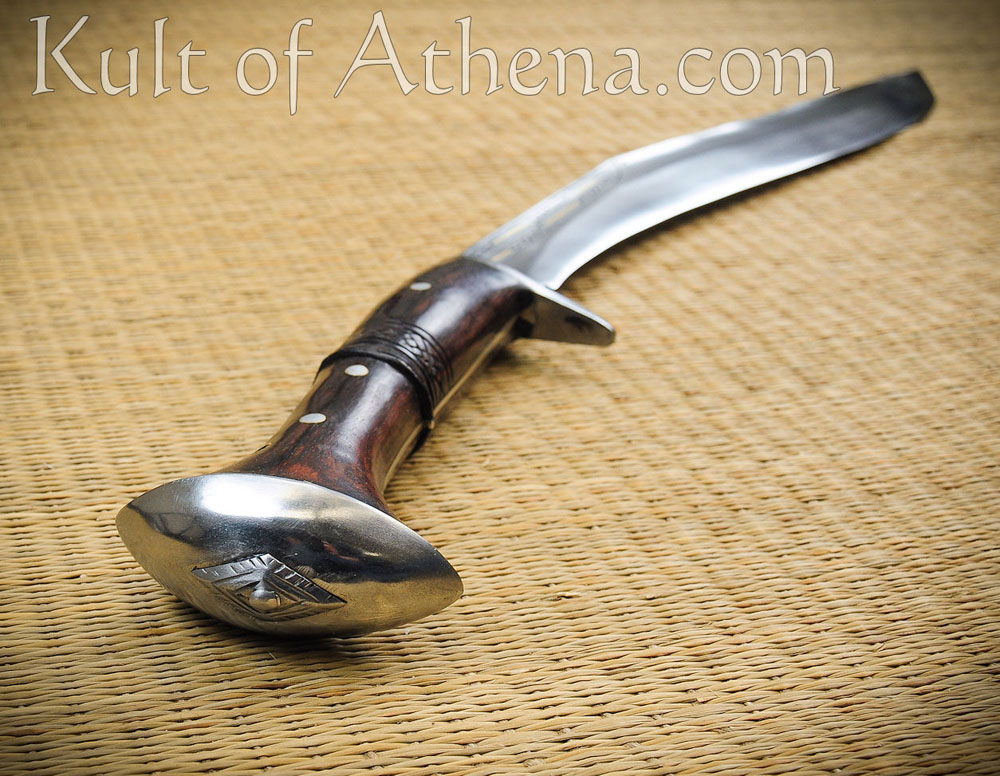
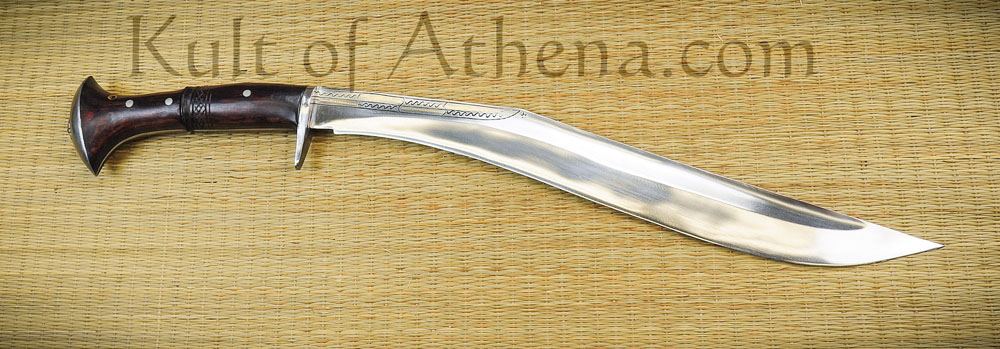
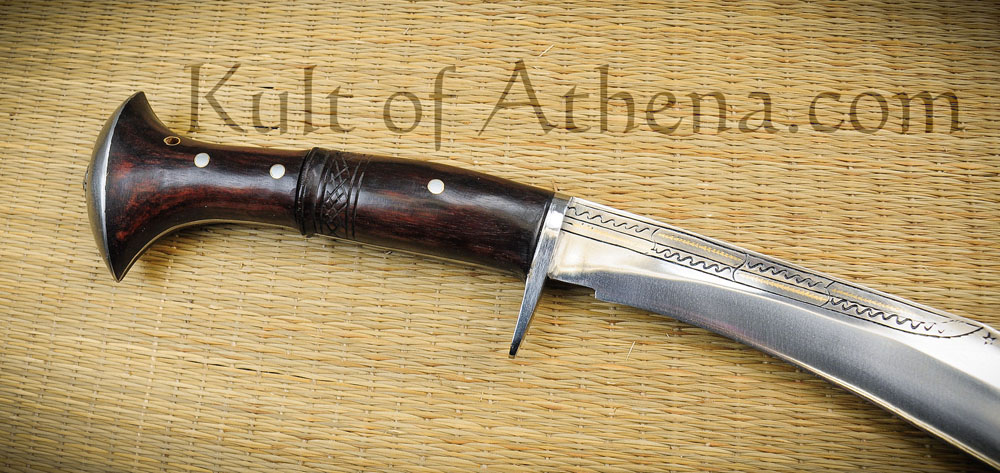
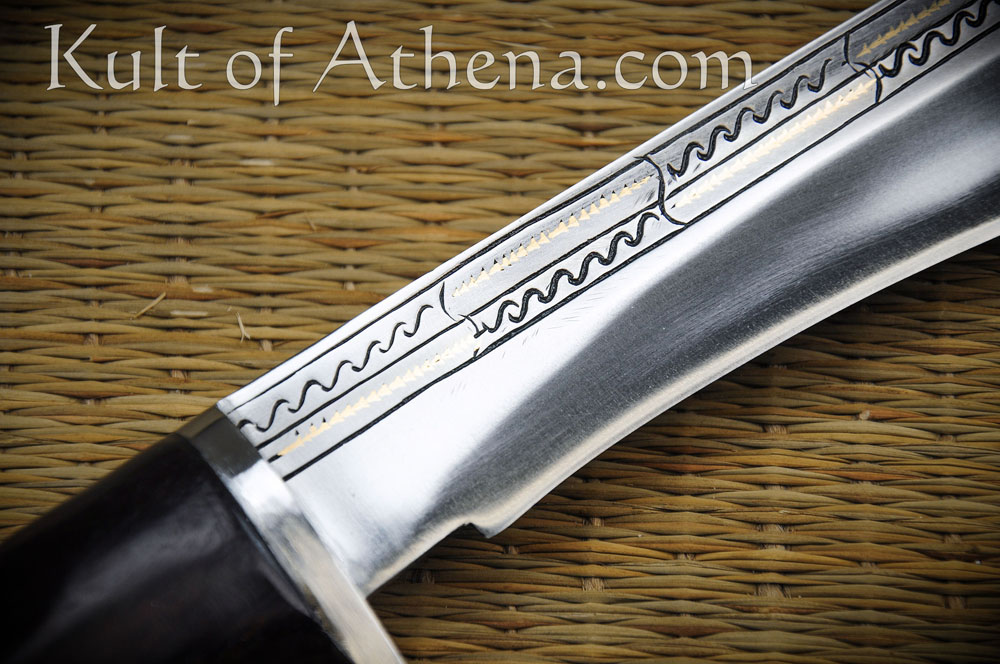

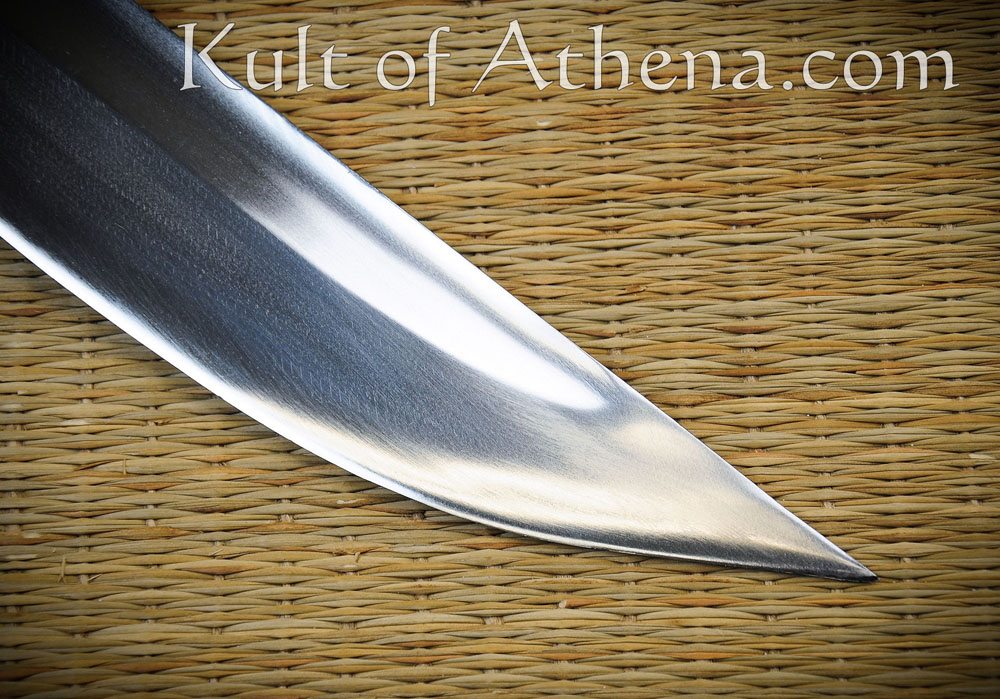
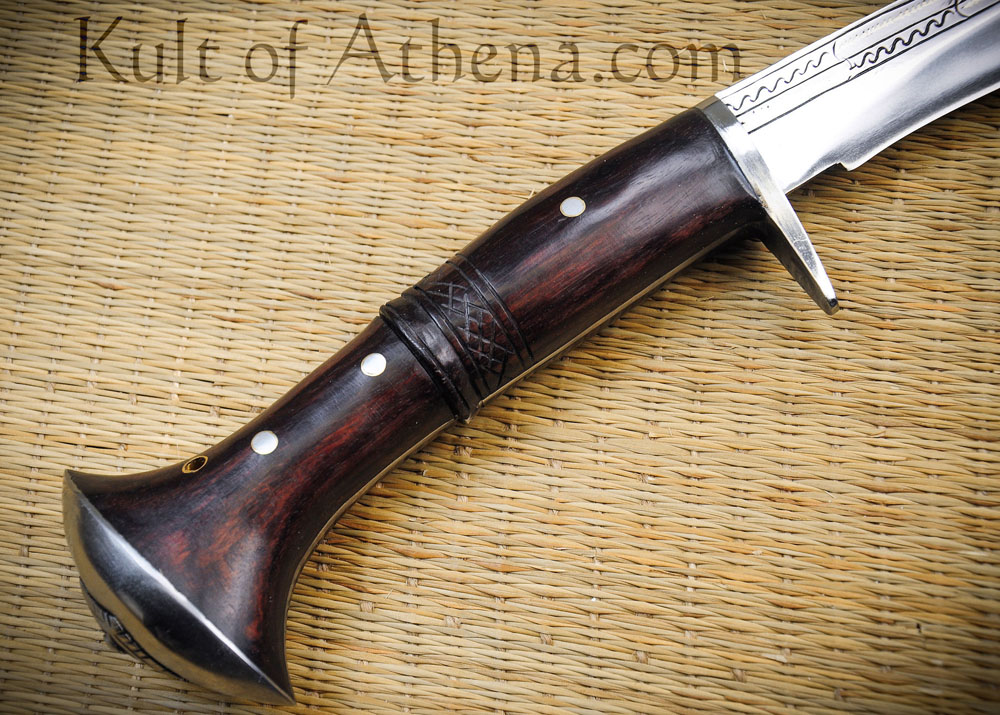
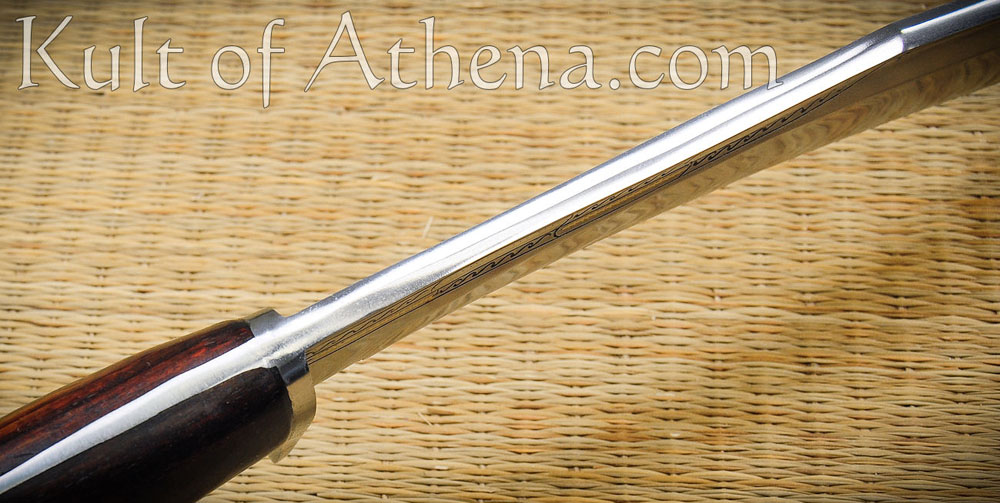
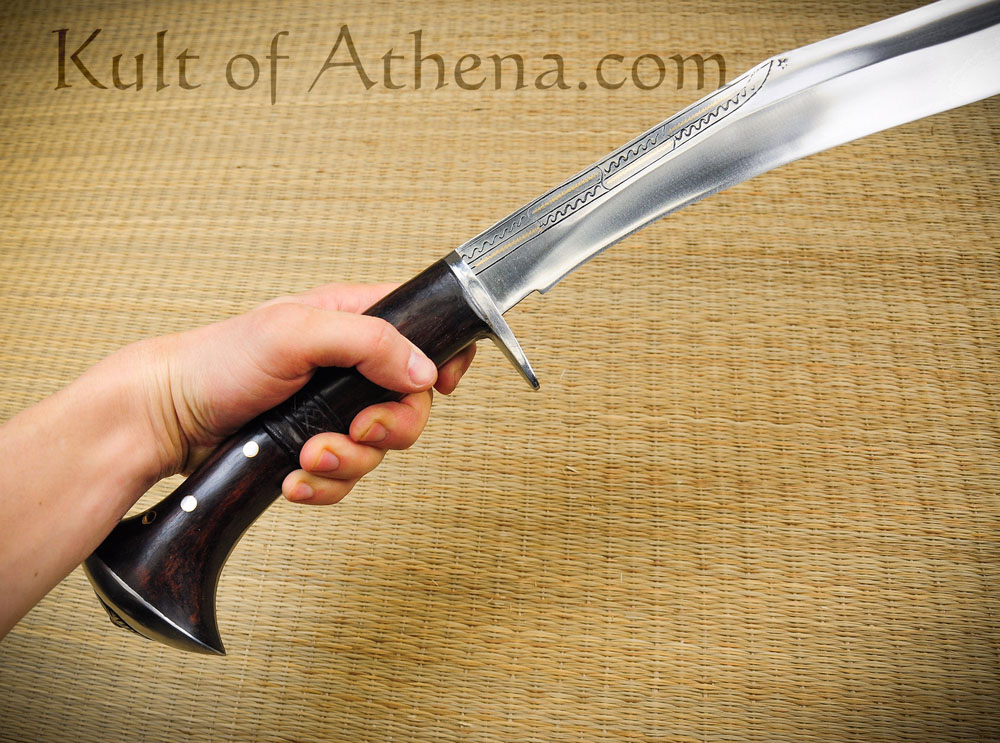
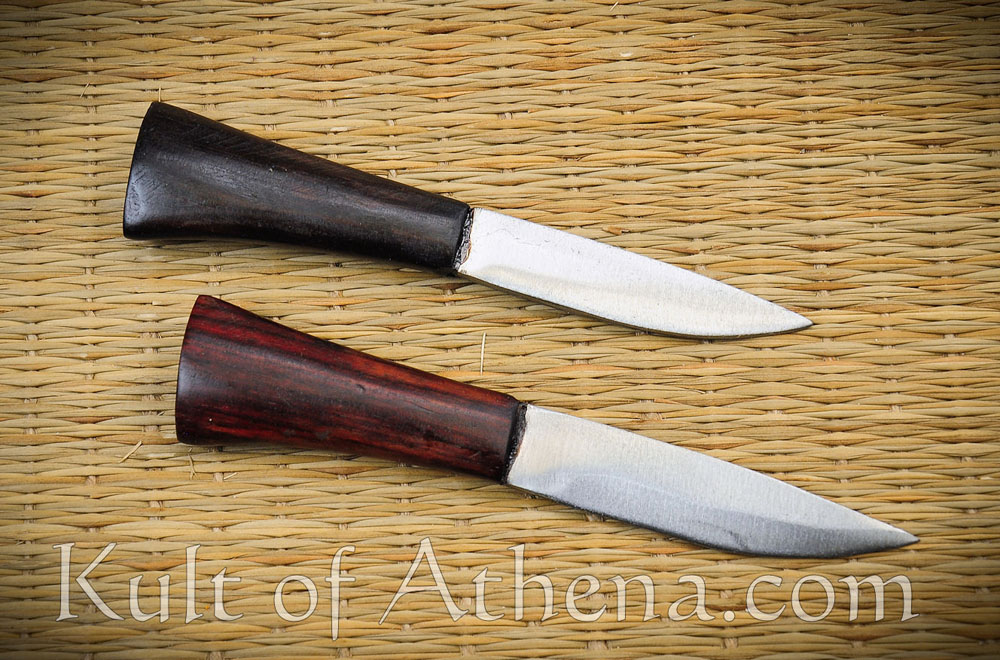



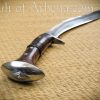
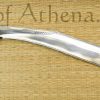
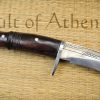
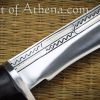
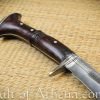
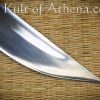
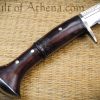
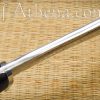
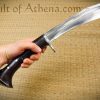

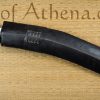
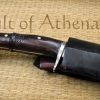

Isaac C. –
Solid. Very, very, solid… This thing is stunning, and not a heavy as I would have thought. Don’t get me wrong, for a short blade this feels massive in the hand, but that’s a khukuri for you. After picking through several different manufacturers, I wound up selecting EGKH, just because their products have a solid reputation, and they’re considerably cheaper than those from Himalayan Imports. The short guard keeps your hand from slipping up the blade during a thrust, and would somewhat protect your fingers while parrying (I know thrusting isn’t typical for a khukuri, but the tip of the blade lines up with your hand, making it an option). The spine is very thick, and the construction is very sturdy. It’s not sleek, fancy, or showy. It’s utilitarian, and seeing how the khukuri was originally and agricultural tool, it makes sense.
Before buying something like this one should take several things into account, the most prevalent of which is the fact that a khukuri does not feel like a typical sword. It’s heavier, and it’s point of balance is several inches past the guard. The khukuri sits in a middle ground between an axe and a short sword. The guard is what sold this product for me, because it makes the weapon more versatile. EGKH’s website states that this khukuri can be used for chopping wood and clearing brush, I haven’t used it for this, but based on the construction I’m inclined to believe them.
The only reason I can’t give this product five stars is because on my khukuri, of the three pins that fasten the wood scales to the tang, the one closest to guard is positioned practically in the middle of the handle, unlike in the picture where they are more evenly spaced. There were a couple little scuffs on the blade that were barely noticeable, and some polishing should remove them. Regardless, this is a handmade product, and those little flaws are to be expected.
In summation, I highly recommend this khukuri. It’s rugged but beautiful in its own right. I’m certain it will last me a lifetime.